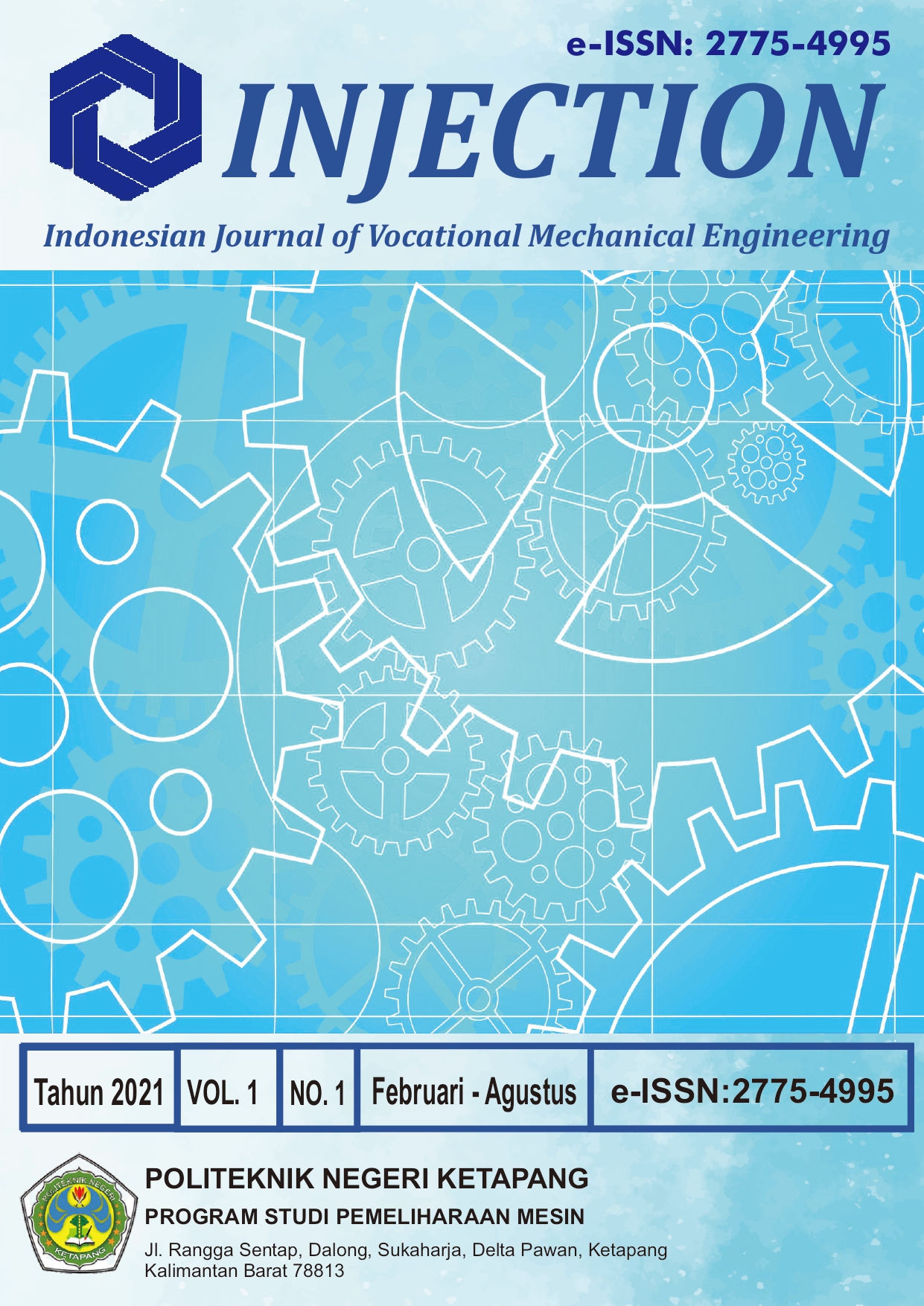PENGARUH PERBANDINGAN CAMPURAN 50% LIMBAH SAWIT DAN 50% KOTORAN SAPI TERHADAP PROSES TERJADINYA BIOGAS
 https://doi.org/10.58466/injection.v1i1.1350
https://doi.org/10.58466/injection.v1i1.1350
Keywords:
palm waste, biogas, time, fire colorAbstract
This gas comes from the mixing of liquid waste oil and cow dung, liquid waste oil and animal waste into energy that can be utilized through the process of anaerobic digestion. Making biogas from waste oil, especially oil and cow effluent has the potential as an environmentally friendly alternative energy, because in addition to utilizing waste oil and cattle, the rest of the biogas production in the form of slurry can be used as organic fertilizer rich in elements which are needed by plants. biogas very much. The purpose of this study was to determine the effect of mixing liquid waste oil and cow dung on the length of time the process of biogas and the color of the flame. Testing of this study using a gouge and medium pressure gas stove. In the biogas test results on day 10 but not significant, after day 15 to 20 days there was an increase in the reaction to the occurrence of biogas. For the color of the flame produced, the color of the flame was blue.
References
Mayasari, H.D., Riftanto, I.M., Aini, L.N dan Ariyanto, M.R. . Laporan Tugas Akhir Pembuatan Biodigester Dengan Uji Coba Kotoran Sapi Sebagai Bahan Baku. Fakultas Pertan Pertanian. Universitas sumatra utara, 2010.
Siregar, P. . Produksi Biogas Melalui Pemanfaatan Limbah Cair PKS dengan Digester. 2009
Lazuardy, I.,. Skripsi Rancang Bangun Alat Penghasil Biogas Model Terapung. Fakultas Pertan Pertanian. Universitas sumatra utara, 2008
Latif, 2008. Skripsi Rancang Bangun Alat Penghasil Biogas dari Plastik Polietilen. http://repository.usu.ac.id/bitstream/123456789/25025/7/Cover.pdf. diakses 24 Agustus 2020.
Lazuardy, I., 2008. Skripsi Rancang Bangun Alat Penghasil Biogas Model Terapung. http://repository.usu.ac.id/bitstream/123456789/15013/1/09E00243.pdf diakses 24 November 2020.
Hairian, R., Sudirman, Pengaruh Pemberian Water Trap Pada Biogas Terhadap Warna Nyala Api, 2014. Jurnal Logic Vol 14, No 1, 1-59, ISSN: 1412-114X







